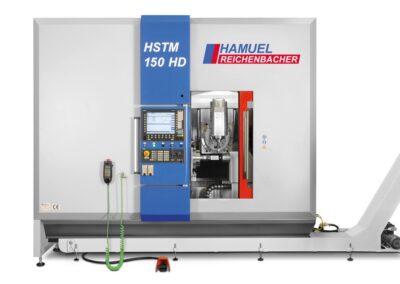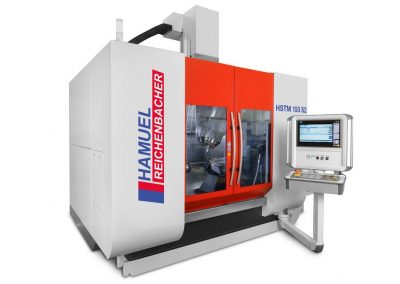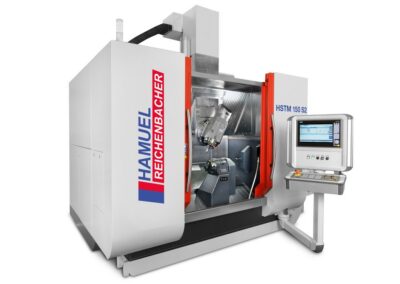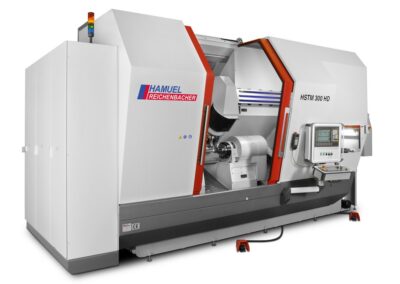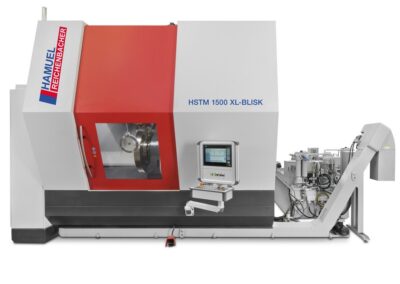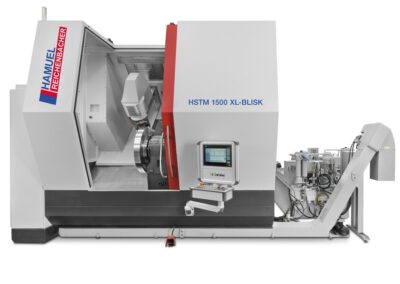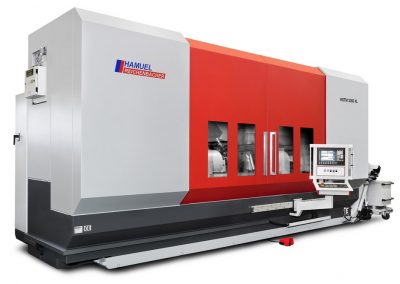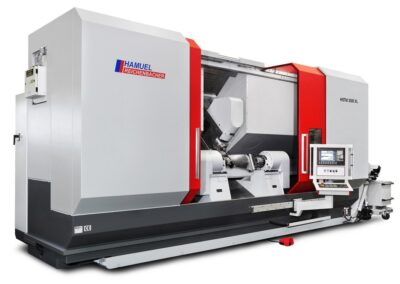5 axis machining center HSTM
Why give away potential?
Make use of your competitive advantages! The 5 axis machining center HSTM with horizontal component orientation is particularly suitable for the machining of turbine and compressor blades, blisks/impellers and/or radial compressor fans. The slide-ways have been inclined at an angle of 45° to the front to ensure an optimum mass distribution, excellent loading possibilities and an excellent view of the working area.
Configuration Examples
HSTM
Precision and economics
Where the attainable accuracies and surface qualities are concerned, the HSTM even exceeds the highest demands for modern blade machining. Continuous maximum productivity is ensured by its sturdiness and rigidity, as well as by the integration of an HSC-support.
Extreme adaptability
The compact construction of the machine permits a rapid and flexible installation at the customer plant – without any special requirements as to the nature of the floor foundation. The machine consists of a one-piece base, where all units have been arranged in an ideal way for the machining of horizontally clamped components.
Ergonomics and productivity
The inclined position of the axes in the machining area guarantees an excellent chip removal. Standard interfaces at the rotary axes and peripheral components are the essential characteristics of this machine, being designed for utmost productivity. In arranging the operating and service elements, special importance was attached to their ergonomic layout.
The HSTM-series stands for:
- Excellent up-time
- High static and dynamic rigidity
- Thermo-stability in all axes
- Modular construction
- Ergonomic design
- Motor spindles with high speed and strong torque
- Utmost machine dynamics for a short component machining time
- Best accessibility for maintenance and service
- Highest demands regarding accuracy and surface quality
- Automatic changing of tools and components
- Excellent surface qualities owing to hydrostatic A- and C‑axes
Machining of turbine blades
Do you need an extraordinary solution – not just a compromise?
In aviation even the tiniest fault can be the cause of a big catastrophe. This is why we are very well aware of our great responsibility to provide excellent quality and sustained reliability with our solutions. Thus, it is insufficient to just meet the generally acceptable quality standards, we would rather aim at exceeding them time and time again. For precisely this reason, our target is to find even more efficient solutions with ever increasing advantages for all our customers.
Our system know-how, which is visible in our entire process chain, is a decisive plus point and of great assistance to you in further enhancing your competitive position, as it not only provides you with a considerable increase in your operating efficiency, but also in your safety and profitability levels. We are proud of our capability to make aviation safer by our innovative machining technologies and unique customised precision machines.
Of course this applies not only for our customers from the aviation sector, but also to our customers from other industries. The benefits from our know-how and greater demands on precision and quality have helped them all maintain an advantage over their competitors.
Machining of blisks
Most modern technology
In particular where the production of aircraft engines is concerned, the demand to reduce consumption acts as the driving power for innovation. This demand can exclusively be met by a reduction in weight along with an increase in efficiency.
This situation has provoked the use of highly developed, light-weight, heatresistant materials and the combination of individual components, consequently a reduction of fits and joints. Owing to higher speeds, especially circumferential speeds, as well as three-dimensional blade configurations, this increase in efficiency causes greater demands on component performance.
The challenges mentioned have led to the development of blisks, components where functions have been integrated to a high degree to replace the fitting of individual blades.
Efficiency as an argument
Today, turbine manufacturing simply cannot be imagined without blisks. They have largely taken the place of individual blades mounted on disks. The word blisk combines the terms blade and disk.
Manufacturing a blisk means the lateral milling of blade profiles from a forged disk using a CNC-milling machine. This disk is clamped to the A‑axis and can be rotated while being machined by the 5 axes milling head. Here, pivoting is exclusively done by the milling head. The intricate geometry of such a blisk requires a lot of know-how and mature state-of-the-art milling machines.
All this can be taken for granted at HAMUEL.
Vorteile beim Einsatz von Blisk:
- No joining of blade foot and disk
- No mounting
- No influence of a possible joint on component behavior, for example owing to centrifugal forces at high speeds
- Increased efficiency of the turbine
- Longer component life, as no cracks can form at the blade feet

